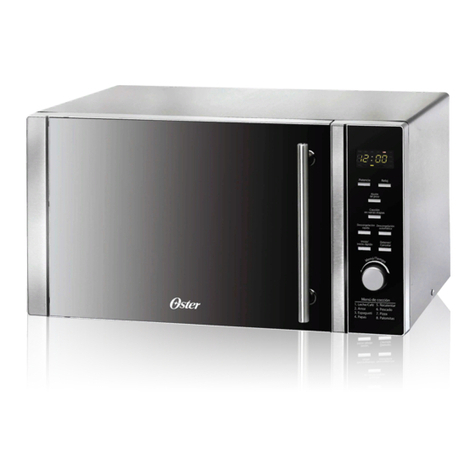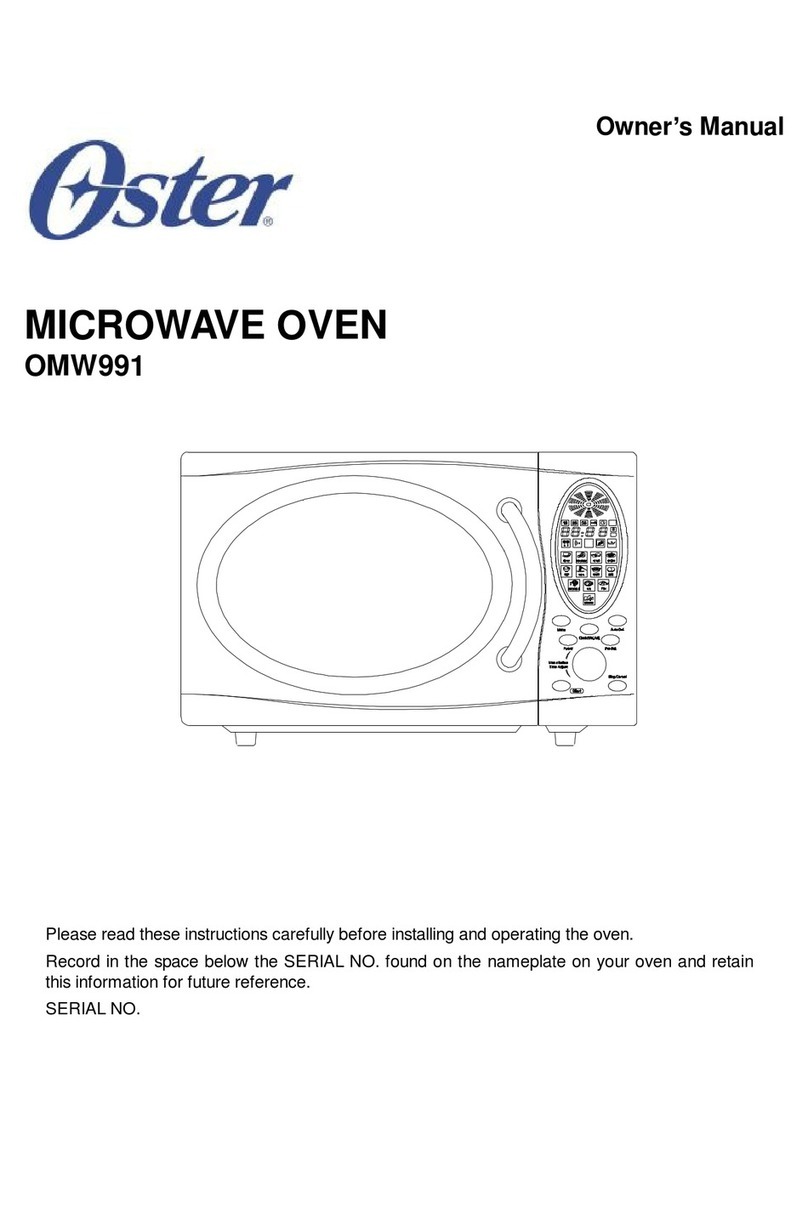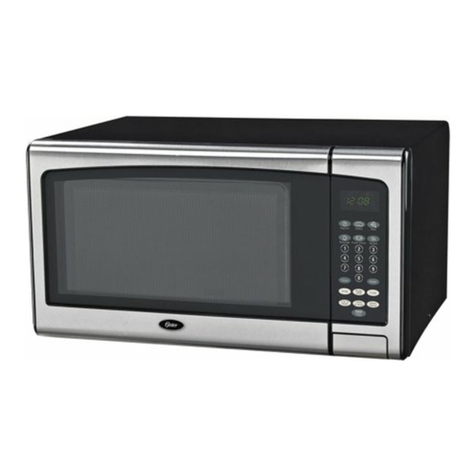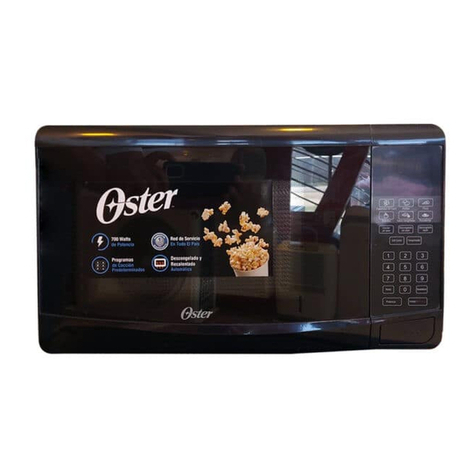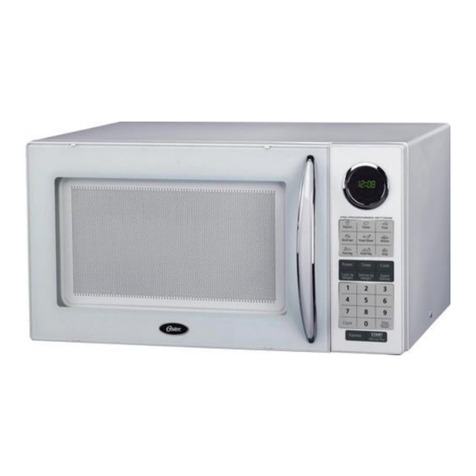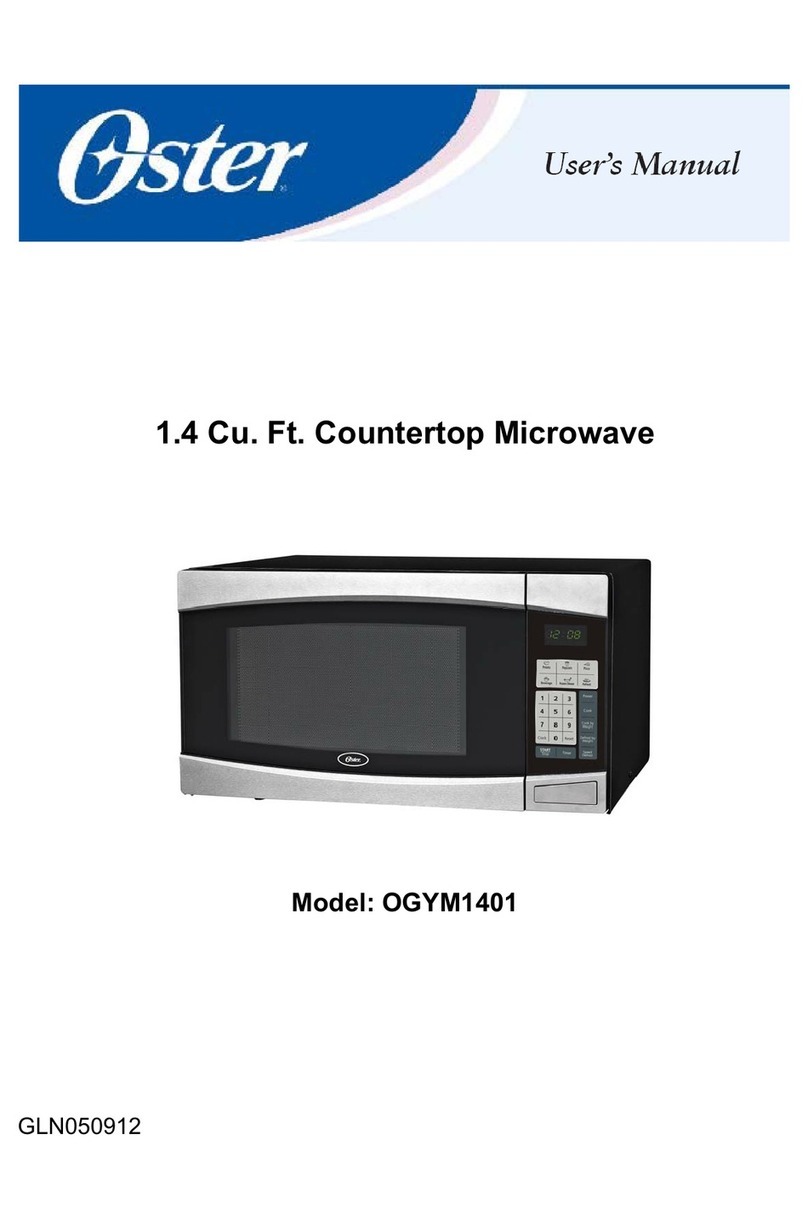
3
IMPORTANT SAFETY INSTRUCTIONS
READ ALL SAFETY INSTRUCTIONS BEFORE USING THIS MICROWAVE
WARNING - to reduce the risk of burns, electric shock, fire, injury to persons, or exposure to excessive
microwave energy, basic safety precautions should be followed, including the following:
Read all instructions before using the microwave.
This microwave must be grounded. Connect only to properly grounded outlets. See page 5 for grounding
instructions.
Install or place this microwave only in accordance with installation instructions.
Some products, such as sealed glass jars, may explode and should not be heated in this microwave.
This microwave is intended for use only as described in this manual. Do not use corrosive chemicals or
vapors in this microwave. This type of microwave is specifically designed to heat, cook, or dry foods. It is
not designed for laboratory use.
As with any appliance, close supervision is necessary when used by children.
Do not overcook food. Carefully attend to the microwave when paper, plastic, or other combustible
materials are placed inside the microwave to facilitate cooking.
Remove wire twist-ties from paper or plastic bags before placing in microwave.
If materials inside the microwave should ignite, keep microwave door closed, turn it off, and disconnect the
power cord or turn off the power fuse at the circuit breaker panel.
Do not use the microwave cavity for storage purposes. Do not leave paper products, cooking utensils, or
food in the cavity when not in use.
Liquids, such as water, coffee, or tea may overheat beyond the boiling point without appearing to be boiling
due to surface tension of the liquid. Visible bubbling or boiling when the container is removed form the
microwave is not always present. THIS COULD RESULT IN VERY HOT LIQUIDS SUDDENLY BOILING
OVER WHEN A SPOON OR OTHER UTENSIL IS INSERTED INTO THE LIQUID. To reduce the risk
of injury: do not overheat the liquid; stir the liquid both before and halfway through heating; do not use
straight-sided containers with narrow necks; after heating, allow the container to stand in the microwave a
short time before removing; use extreme care when inserting a spoon or other utensil into the container.
Do not heat oil or fat for deep-frying in this microwave. It is difficult to control the temperature of oil in the
microwave.
Pierce foods with heavy skins, such as potatoes, before cooking.
The contents of feeding bottles and baby jars should be stirred or shaken and the temperature should be
checked before serving to avoid burns.
Cooking utensils may become hot from heat transferred from the heated food. Pot holders may be needed to
handle these utensils.
Do not cover or block any openings on the microwave.
Do not store or use this microwave outdoors. Do not use this microwave near water.
Do not operate this microwave if it has a damaged cord or plug, if it is not working properly, or if it has been
damaged or dropped.
Do not immerse the cord or plug in water. Keep cord away from heated surfaces. Do not let the cord hang
over the edge of the table or counter.
Use only thermometers specifically designed for microwaves.
Do not operate any heating or cooking under this microwave.
Be certain the glass tray and roller rings are in place when using the microwave.
Read and follow the specific “Precautions to Avoid Possible Exposure to Excessive Microwave Energy”
section found on page 4
SAVE THESE INSTRUCTIONS
1.
2.
3.
4.
5.
6.
7.
8.
9.
10.
11.
12.
13.
14.
15.
16.
17.
18.
19.
20.
21.
22.
23.


